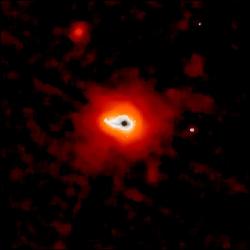Three UMD Graduate Students Receive NASA Earth and Space Science Fellowships
Three graduate students in the University of Maryland College of Computer, Mathematical, and Natural Sciences have been awarded NASA Earth and Space Science Fellowships.
Margaret Marvin, Margaret McAdam and David New received the three-year awards, which provide $30,000 per year toward a stipend and expenses.
Margaret Marvin, Ph.D. student in chemistry
Advisor: Ross Salawitch, a professor with appointments in atmospheric and oceanic science, chemistry and biochemistry, and the Earth System Science Interdisciplinary Center
“Connecting Emissions and Oxidation of Isoprene Through In Situ and Remote Observations of Formaldehyde”
Marvin’s research seeks to improve atmospheric modeling of isoprene, an important precursor of air pollutants like ozone and organic aerosol. Specifically, she will be using aircraft observations of isoprene oxidation products to evaluate how well models simulate isoprene emissions and chemistry, which determine the impact of isoprene on air quality. Marvin earned her bachelor’s degree in chemistry from the University of California, Irvine.
Margaret McAdam, Ph.D. student in astronomy
Advisor: Astronomy Professor Jessica Sunshine
“Water in the Early Solar System: Mid-Infrared Studies of Aqueous Alteration on Asteroids”
McAdam’s research proposal described a set of projects designed to map water content of the asteroid belt to better understand the initial distribution of water in the solar system. To map the abundance of water, McAdam will identify relationships between degree of aqueous alteration and orbital parameters such as semi-major axis. She earned her bachelor’s degree in physics from Mount Holyoke College.
David New, Ph.D. student in atmospheric and oceanic science
Advisor: Atmospheric and Oceanic Science and Earth System Science Interdisciplinary Center Professor Xin-Zhong Liang
“A Unified Representation of the Planetary Boundary Layer and Shallow Cumulus Convection”
New plans to develop a new computational module in climate models for the representation of atmospheric turbulence and low level clouds. This representation improves upon conventional approaches by using a more consistent treatment of the statistical variability of heat, moisture, and momentum in cumulus cloud ensembles, as well as by unifying the treatment of near-surface processes, atmospheric turbulence, and cloud processes. He earned his bachelor’s degree in economics from California State University, San Marcos, and his M.S. in applied mathematics from San Diego State University.
The fellowship program supports continued training of a highly qualified workforce in disciplines needed to achieve NASA’s scientific goals.
Media Relations Contact: Abby Robinson, 301-405-5845, abbyr@umd.edu
Writer: Mary Kearney
University of Maryland
College of Computer, Mathematical, and Natural Sciences
2300 Symons Hall
College Park, MD 20742
www.cmns.umd.edu
@UMDscience
About the College of Computer, Mathematical, and Natural Sciences
The College of Computer, Mathematical, and Natural Sciences at the University of Maryland educates more than 7,000 future scientific leaders in its undergraduate and graduate programs each year. The college's 10 departments and more than a dozen interdisciplinary research centers foster scientific discovery with annual sponsored research funding exceeding $150 million.







